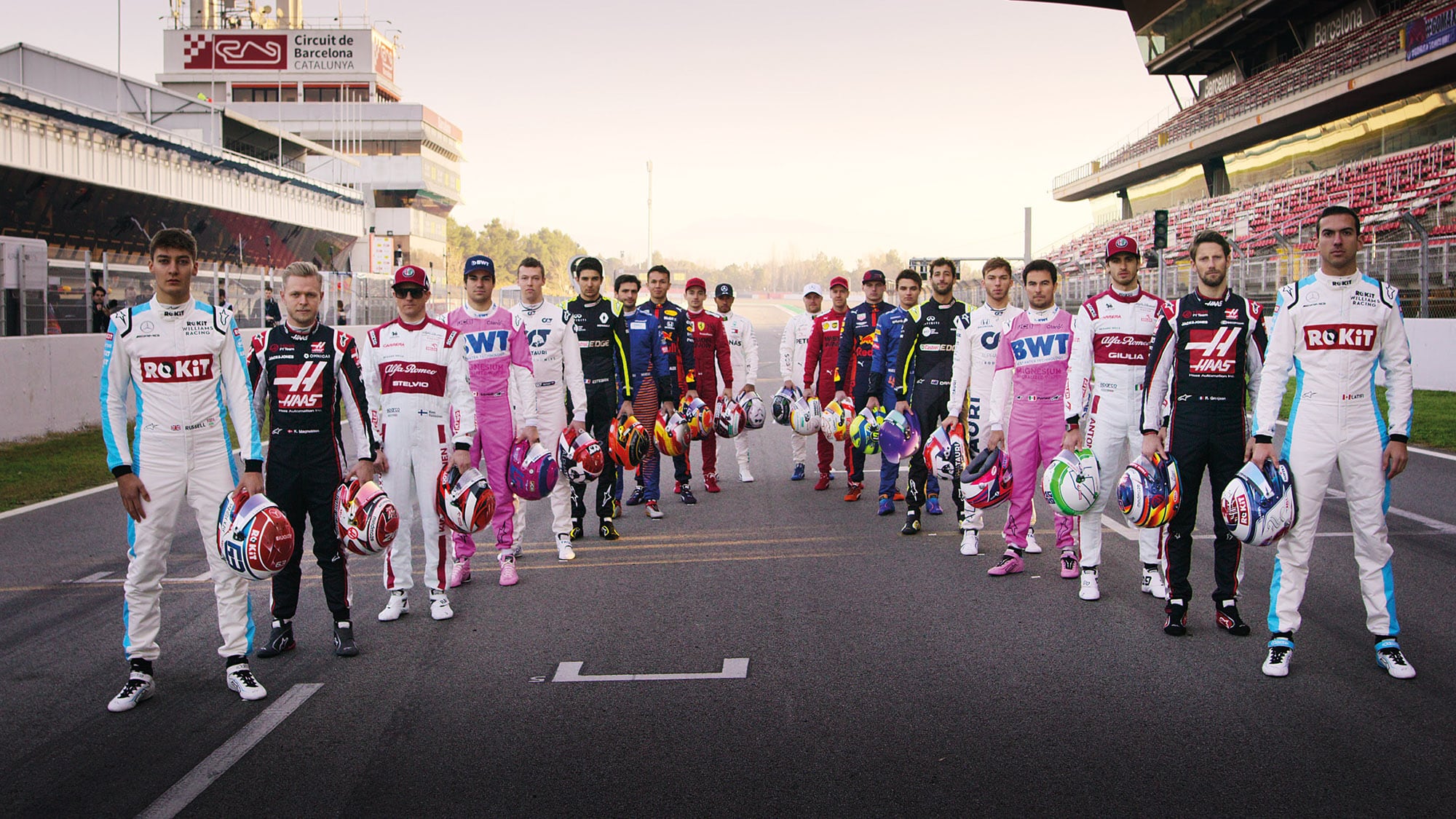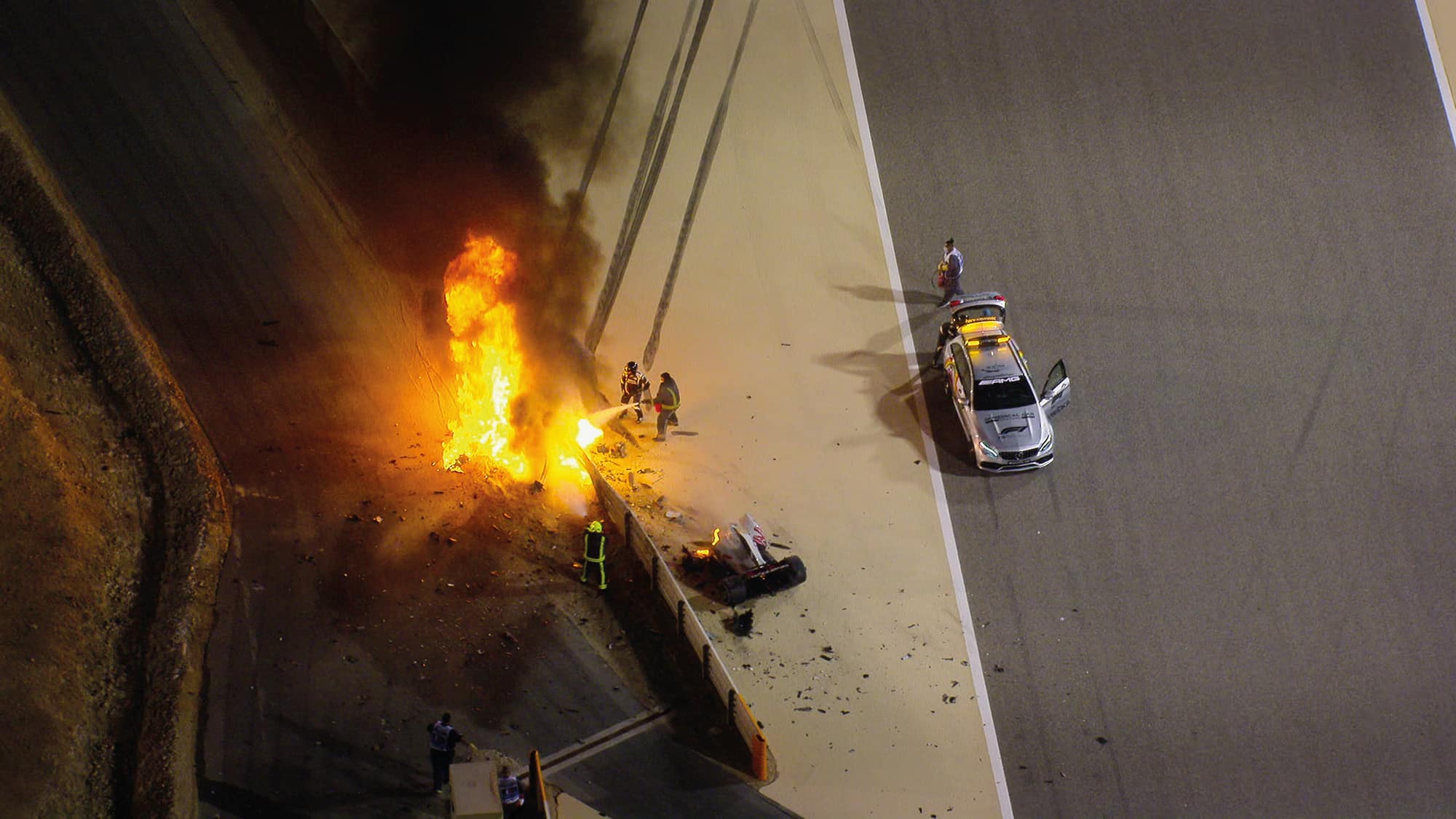Your armchair F1 paddock pass
The latest season of Drive to Survive exposes some feisty exchanges but does so with more maturity, says James Elson

The all-star cast of Drive to Survive – and nobody’s writing their script for them
Cameras and boom mics circle their prey in Styria: Daniel Ricciardo receives an icy wave from his jilted Renault team boss, Christian Horner and Helmut Marko guffaw to themselves in a corner while Günther Steiner cracks his knuckles, preparing to smash in yet another newly repaired Haas motorhome door.
The third instalment of Drive to Survive, the Netflix series that has introduced F1 to a whole new audience, has arrived. With a less contrived narrative, better-integrated action shots and sound effects inflected with a little more subtlety, it also appears to have gone up a gear.
Made by Box to Box Films, the documentary is as good as some of us will get to a paddock pass, going behind the scenes to show the top level of motor sport apparently as it ‘really’ is.
During its short history the Netflix F1 series has found many fans, both in diehard motor sport anoraks and casual viewers, and despite much of the fair criticism directed towards the show, it seems most just can’t take their eyes off it.
And with good reason. Box to Box know a thing or two about dramatic narrative. Having produced much-lauded films on Ayrton Senna, Diego Maradona and Amy Winehouse in recent years, the directors continue to work their magic here too, but do it with a touch more delicacy than in previous DtS series.
If Season 2 was the high-octane equivalent of Michael Schumacher four-stopping his way to win at Magny-Cours in ’04, Season 3 is a Lewis Hamilton one-stop race on the streets of Monaco: less spectacular in some ways, but just as accomplished.

Romain Grosjean’s
Bahrain crash is analysed in painstaking detail without sensationalising
That said, Drive to Survive Season 3 gets going faster than previous series, foregoing the usual ‘how F1 works’ episode to go straight into preseason testing in Barcelona BC (before Covid). A new shark has plunged into the F1 tank in the shape of ‘Big Daddy’ Lawrence Stroll, as Episode 1 also delves into the Racing Point ‘Pink Mercedes’ debacle. It’s a bold move for a series aiming to ensnare casual viewers, but will please close followers of F1, as we see meetings at ‘Giant Killer’ HQ where they plot their better-funded rivals’ downfall.
From then on it’s handbags at dawn as insults are slung back and forth throughout as a result of the Racing Point ructions, with Otmar Szafnauer saying of McLaren’s team principal: “Zak’s not an engineer. He’s never designed a car part in his life, so what he says holds no water with me.” Ooft!
Meanwhile, RP’s sworn enemy – Renault team principal Cyril Abiteboul – screams, “I f***ing hate those pink cars!” as his protest lodged against them returns a limp verdict – you don’t get this on Ted’s Notebook.
Ferrari made a rather drab Netflix debut in DtS2, but this series’ Scuderia instalment is brilliant. After his unceremonious dumping, Sebastian Vettel has decided to be the
spanner in the works at every single Ferrari communications meeting, which we the viewers are deliciously privy to. The car’s rubbish, their world champion driver hates them and now they’re the laughing stock of the whole grid to boot – this is full-on Modena meltdown in all its glory.
Mercedes’ episode gives us an intriguing insight into the mind of Valtteri Bottas – and his sauna – as the Merc man and his agent take a more Finnish approach in working out how to stop getting beaten by Lewis Hamilton week after week. Come the Russian GP, Bottas shows he’s not afraid to play dirty, giving Verstappen a tow in qualifying and thus affording himself a more favourable starting position.
It’s fascinating to watch Toto Wolff et al split into different factions as the new villainous Valtteri foils their plan for a perfect 1-2 on the grid, in the hope of slipstreaming himself into the lead come race day. His plan nearly works, then doesn’t, before Hamilton gets a penalty anyway, thus handing the race to new ‘badass Bottas’. The Finn kicks back with a beer post-race, after trouncing the field and team-mate. All in a day’s work.
Last year’s season-long crucifixion of Pierre Gasly by Red Bull spills into this series. Witnessing his reaction to what ‘Kingmaker’ Horner says about him in a radio interview, as the Frenchman travels to the Italian GP – which he of course then wins – more than proves DtS’s worth. The timing is impeccable.
The break-up and make-up of Renault’s Abiteboul and Ricciardo is where the laughs are in this series – we’re left wondering whether the most irritable man in motor sport might ever get over losing his beloved ‘Honey Badger’.
When the Australian announces he’s leaving Renault, Abiteboul expresses just how gutted he is. They had so many plans, so many dreams! The Renault team boss admits he’s an emotional man – shock horror – hence his testy reaction to Ricciardo’s departure via press release and everything that followed.
The circus act stars of previous DtS series, Günther Steiner and Haas, this time grittily demonstrate the difficulties of surviving in F1 instead. Steiner still manages to pop up with some great lines during this series though, and considering Haas’s new 2021 title sponsor is a Russian oligarch who appears as if he could easily play any Roger Moore-era Bond villain, Haas in S4 should be extremely entertaining.
Romain Grosjean’s Bahrain crash is covered in detail, addressing the emotions of all involved without at all seeming crass. Such a harrowing moment is unlikely to have been covered in a sports documentary like this before.
Some crucial moments of F1 2020 aren’t covered however, such as George Russell almost winning in Sakhir, and there’s minimal footage of the thrilling Turkish GP. The fact that Lewis Hamilton wins a record-equalling seventh championship is barely mentioned.
While it’s a non-racing topic, the Australian GP’s cancellation is covered with no controversy or contrary opinion whatsoever – Hamilton’s “cash is king” comment remains the one insight. Worse is the almost complete ignoring of the Black Lives Matter movement and F1’s subsequent ‘We Race as One’ diversity campaign. Both were huge themes of the 2020 season but you wouldn’t know it from this documentary.
Instead the producers give Hamilton a five-minute slot to say his piece at the end. It appears that they simply didn’t know what line to take, so decided to say nothing at all before guiltily shoving in the Hamilton afterthought.
The fact remains though that whatever your interest in F1, Drive to Survive makes compelling viewing. A slower burner than previous years, but one worth taking in.
